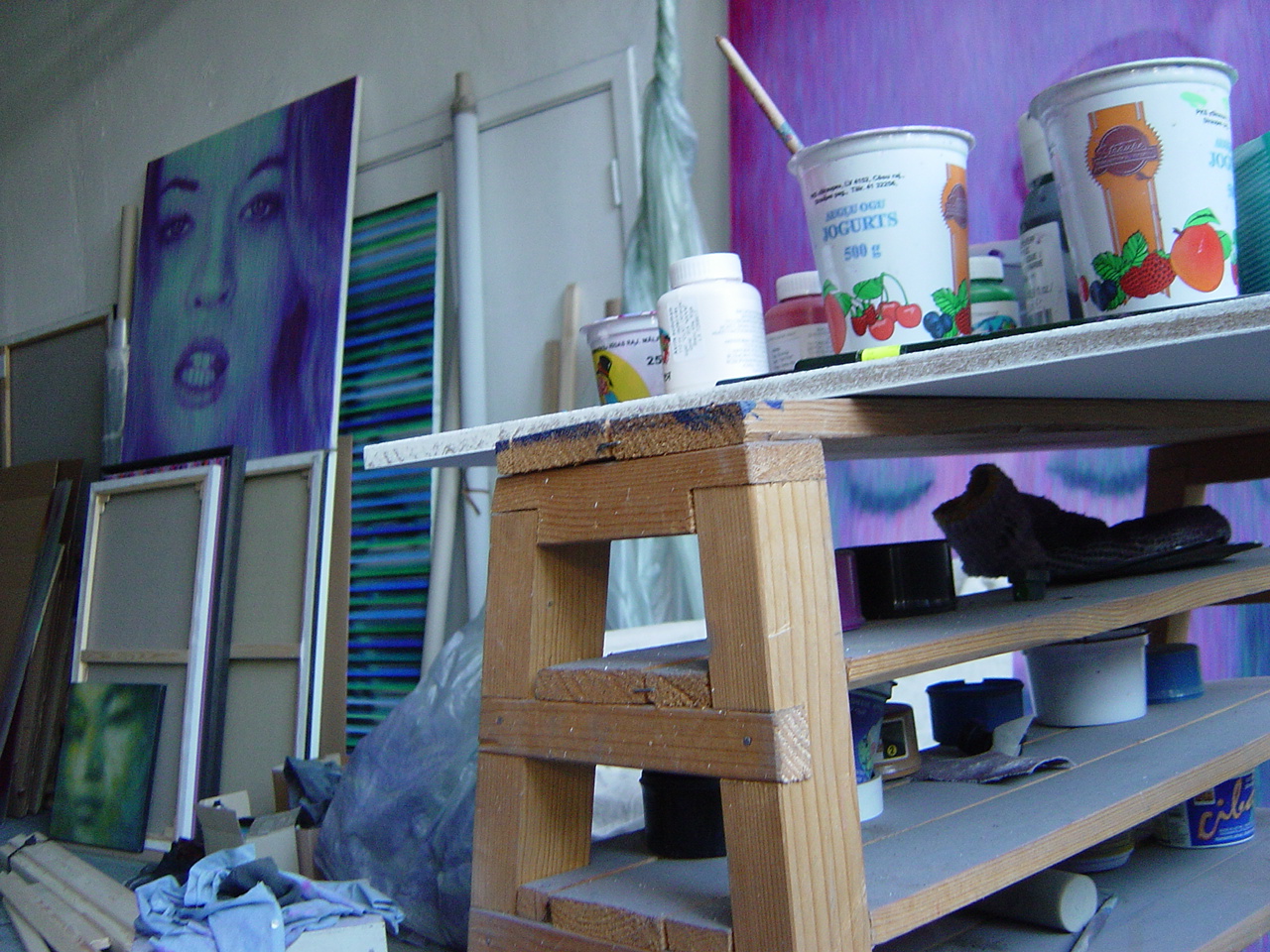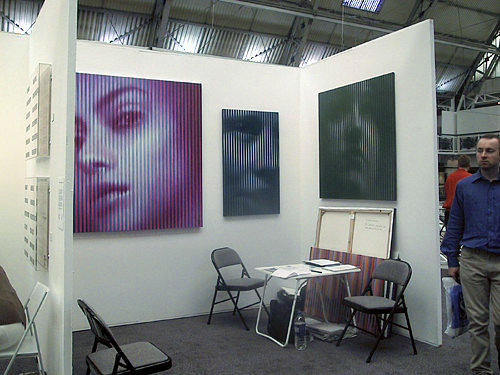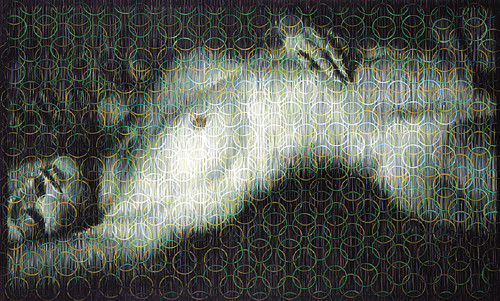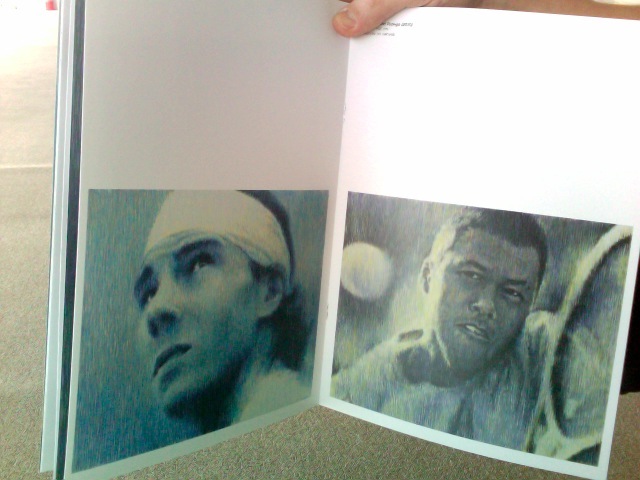Ivanovs in Würth. On Openness and Integration into the European Market
It was recently reported that the artworks of Kaspars Zariņš and Ritums Ivanovs were included in one of the world's most distinguished private collections - the Würth Collection, which encourages taking a look on the bright side as regards the prospects for Latvian art internationally. Below you can read the interview with gallery manager Anna Sausverde-Ellger by culture theorist Marita Batņa
The gallery manager of Art Promotion02, Anna Sausverde-Ellger was stimulated to share the experience of this achievement - the fruit of her efforts - in response to a note of pessimism sensed in conversation late last year with Māra Lāce, the director of the Latvian National Museum of Art. Sausverde-Ellger's view on matters was cause for another conversation, in this way continuing the dis cussion on the promotion of a contemporary art market in Latvia.
Studija: What was the process that led to the in clusion of Latvian artworks in the Würth Collection?
Anna Sausverde-Ellger: You have to be aware of what you can dare. For me it is the conviction about the high quality of our paintings. The Würth Collection consists of around 12 thousand pieces, which in various com binations tours among exhibition spaces and is loaned out to other institutions. The chance was provided by contacts - that is the norm. I prepared a substantial pre sentation on a number of Latvian artists. Negotiations and requests for further information followed. That took two years, and then I was told: "Yes, we're buying, because it's good painting!" The choice fell on five works by Kaspars Zariņš and two works by Ritums Ivanovs. Mostly, the owner of the Würth Collection selects the works himself - impulsively.
Studija: Promotion of Latvian art would, presumably, become more effective if each single contribution in this direction would be part of a concerted action, making use of a wide network of contacts and reaching a high level. How can this be encouraged?
A.S.E.: Returning to this particular deal, I should add that knowledge is also vital. Valuable experience and impressions are being accrued in Latvia, art life is becoming more vibrant. There is good art and there are good galleries. However at the highest level an "art market" as such does not exist in Latvia. The main task is yet to be achieved: it must open up. That does not mean solely taking art to fairs and shows. Being open to the European market means that with art and artists coming in from other countries healthy competition is encouraged; interest on the part of foreign critics grows as well. Then the word gets around. You have to penetrate the infrastructure of the West, starting from the very roots and growing upwards, getting galleries and curators who do the spade work on your side. If a body such as an association of galleries were to emerge in Latvia, it could act as a platform for coordinated activity at the level of communication, but economic activity cannot be coordinated. Certainly, moments of prestige are required and these are partly formed at a political level, but that's not enough.
Studija: Would you advise local galleries to col laborate with foreign partners?
A.S.E.: First of all, Latvian galleries need to talk to each other. From my own experience I can say that I have been able to work together with some galleries, but not with most of them, unfortunately. When working with Latvian artists in Western Europe I often feel distrust, envy, absolute disassociation and a wish to "categorise" artists. There is no point acting like this because it's a free market, where relationships develop at all levels and in all directions. As regards foreign galleries, the process should take place naturally: through contacts and good relationships.
Studija: Could the first Baltic art fair in Vilnius pro vide food for thought, or even be a turning point?
A.S.E.: I must admit - it's good that it's happening, but...having worked together with the curator Prof. Raminta Jurėnaitė already I have had food for thought. The professor is assigning to the fair the same message which was conveyed by the Lithuanian contemporary art exhibition at the Arsenāls Hall of the Latvian National Museum of Art [Vilnius Art Scene After 2000, 05.12.2008-18.01.2009, curator Dr. Raminta Jurėnaitė]: "We are mo dern, we are just like you". In art fairs the programmes, however, are set by the galleries themselves. I won't hide my opinion that the highest level of painting in the Baltic states is to be found in Latvia. So, taking into account that the idea of an art fair had reached a fairly advanced stage in Riga, I regret that it is now a missed opportunity - if the fair in Vilnius is to take place on a regular basis. In any case, I hope that the experience will motivate Latvian galleries towards openness, that these changes will also affect relationships between gallerists and artists. These relationships must be clear cut and based on mutual respect, because the person who runs a gallery is a servant to art, and not the other way round.
Studija: Painting is not the most fertile field for acquiring global recognition, but rather it's the new media and public art projects.
A.S.E.: In my view, you should stay true to yourself instead of putting on a foreign mask. At the beginning of the 1990s in Latvia everything was tried out - that was inevitable and good. And when the froth settled down, the artists gleaned what was most meaningful to them. There is a creative energy here which has no parallel in the West, and this is our unique and lasting advantage. I must say that the potential is based on the quality of the schooling, and I believe that this should be protected. The art life of Latvia has its own development, which should be allowed to unfold. Yes, we don't have any stars. But stars are created, and this happens in various ways. The fact that our art is in the Würth Collection gives impetus to pursue one of these ways. The names of the artists and the name of Latvia will appear in important catalogues. This information will be distributed among museums. Shows are held for new acquisitions of the Würth Collection. Through this collection people will begin to recognize our art. How to address Europe with Latvian art? One of the possibilities is painting, which has a strong tradition in our country. That's the way Western people think: they see the connection to the basis validating the quality of our art. We have to remind that we once were a part of Europe's art scene, and our task is to re-establish that. Take a look at the examples: the mezzosoprano Elīna Garanča and the conductor Mariss Jansons are personalities who are universally adored, and they are integral to European cultural life. Openness and dialogue in everyday life will yield results. Of course I do understand that it is easier for me because I work in Germany; it is much more difficult to access the European market from here.
Studija: Please characterise what your gallery Art Promotion02 does.
A.S.E.: Activities are mostly to do with Latvian art ists. In late 1980s I had the chance to be among those who used the first official channels to take Latvian art across borders. Art Promotion02 is a registered gallery in Germany and a member of the Association of German Galleries. Gallery activities take place in a number of spheres. I organise exhibitions at the gallery - this is the minimum, because I also take on larger projects. In addition to events promoting Latvian culture I hold exhibitions, I go to art fairs in Germany, Switzerland, and Austria. There are also projects in cities: at the moment discussions are under way for possible projects in Munich and Darmstadt. The Munich project is likely to be in both directions. One of the castles in the Rhineland is also in our sights. The opportunities are many and varied: that's how a free market environment works.
Interview originally published in 2009 in visual arts magazine Studija
Interview by culture theorist Marita Batna






